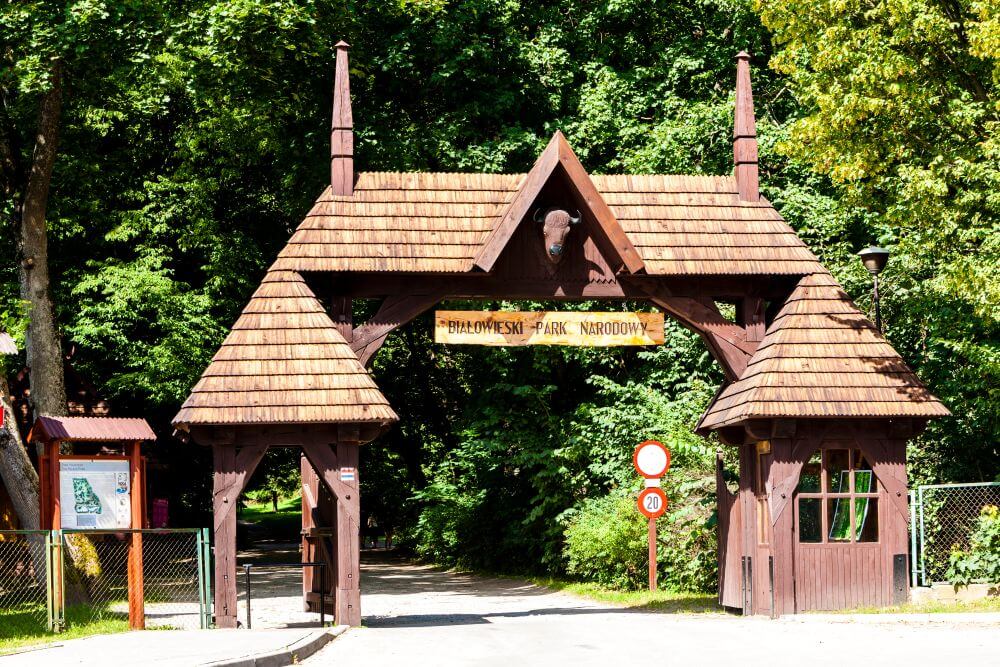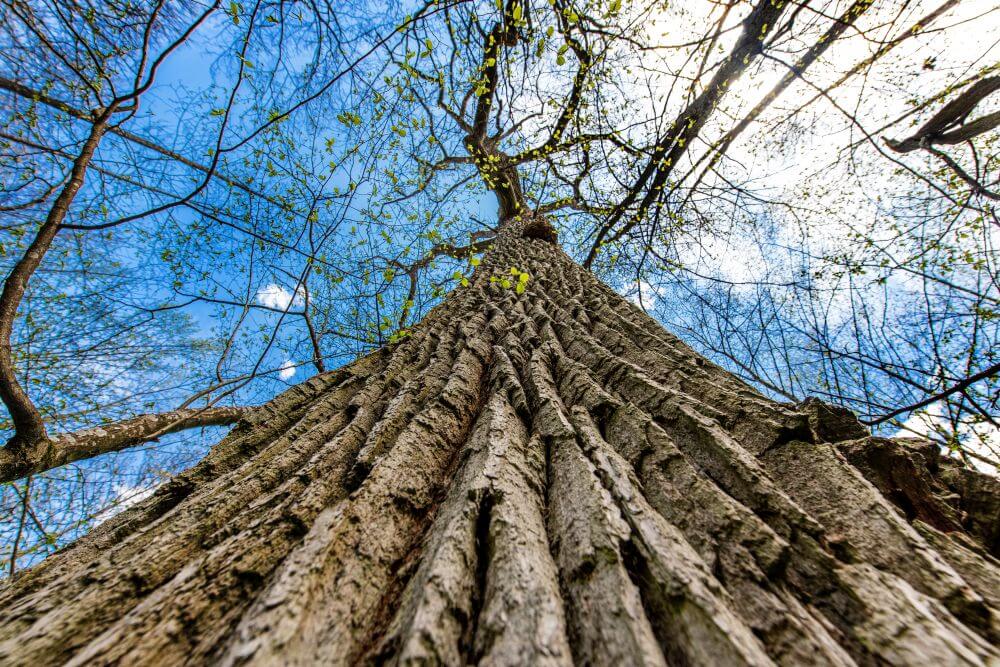Special history of the Białowieża Forest

The Białowieża National Park was established more than 80 years ago to protect a unique treasure – the last real forest in Europe and probably in the world. A place where 12,000 years ago, after the retreat of the Ice Age, forest appeared that continues uninterrupted to this day. This makes it the only lowland mixed forest of prehistoric origin in our climate zone, and one of the few places in the world that has not been altered by resisting human pressure.
The Białowieża forest cannot be called the Amazon forest of Europe, because there is a big difference in area, climate, cultural approach, and so on. Instead, it is quite interesting to compare the jungle to a coral reef. But not because of the diversity of life forms that these ecosystems are famous for. On the contrary, the reason is death and decay – an intrinsic part of the landscape of both places. A reef created from millions of skeletons of dead coral and a primeval forest that overgrows the graveyard of previous generations of trees.
Puszcza is a word of Slavic origin, meaning in Old Polish both an ancient, wild forest and a desolate, empty place (interchangeable with the word desert)! It was this desolation, or rather abandonment of colonisation, hunting and logging as early as the Middle Ages, that determined the unique character of this place, which was appreciated and cultivated in subsequent centuries.
The first traces of habitation in the Białowieża forest are more than 4,500 years old. In the following centuries, people appeared in the hinterland, lived thanks to the hospitality of the forest and the achievements of their cultures, and in time left again. Settlers from Mazovia and Lithuania, the Baltic states, the Tartars and Teutonic knights came here. They used primitive tools to cut down the forest, cultivate the land and burn paddy ore and charcoal. Significant archaeological finds indicate numerous sites, but none of the settlements survived the modern era.
In the 15th century, the forest area, then many times larger than today, was divided among 3 princely manors. The northern part, thanks to the inclusion of King Władysław II Jagiełło in his rule, remained in almost unchanged form and gave rise to the Białowieża Forest we know today. It was forbidden to settle in the royal forest and access with guns or dogs was prohibited. Cutting trees and tilling the land was prohibited. Hunting a bison was punishable by death. Locals had to pay for collecting fleece fruits or firewood. Goods such as honey from the beehives, wood and hay harvested from clearings in the middle of the forest were available to the nobility and clergy after purchasing the “right of access”. The royal forest was guarded by a forest department called the “Osoca”.
Successive kings continued to protect the heritage, but they themselves not only hunted but also built stately homes. Some believe that the tower of one of the hunting houses, built by the Polish rulers, determined the name of the settlement and the entire forest. However, the name Białowieża and the Białowieża forest must have already existed. However, the name Białowieża and Białowieża Forest must have existed before then, as it first appears in 1409 in a description of a hunt by Władysław Jagiello, which lasted eight days and the supply of salted deer meat was intended to feed an army preparing for war with the Teutonic knights.

Dynastic and electoral rulers were particularly fond of Białowieża’s hinterland. They were attracted by the abundance and variety of wildlife, which apparently already in previous centuries distinguished
these forests from those covering most of the Republic. The kings valued their possessions, cared for them and some showed remarkable foresight in doing so. For example, Stefan Batory, who commissioned a game preserve for hunting, or Augustus II the Strong, who initiated the feeding of European bison. In times of peace, the forest provided entertainment for the rulers and during wars, food for the royal army. During the evacuation of Vienna, for example, the army led by Jan III Sobieski ate game from the Białowieża woods.
However, the “granary” was closed to the general public, with a “ploughman” guarding the entrance. Although it is hard to imagine how such a vast area could be controlled, the forest service did its job for more than 400 years. And as long as the service was present, no random settlements were established anywhere in the forest, no one dared to cut down the forest and use the fertile land for agriculture. The memory of the organisation lives on in the name of the largest town in the Białowieża Forest. Hajnówka – the “Gateway to the Forest” and at the same time a district town – takes its name from Heyne Heyne – a German in the service of King August II the Strong. He was a gamekeeper who, as a reward for his services, became the owner of an estate he occupied. From then on it was called Hajnówka and a permanent seat of the forester was established in the resulting settlement.
Osoka’s activities were interrupted by the collapse of the Polish-Lithuanian Commonwealth and the rule of Tsarina Catherine. It was a period of dividing and distributing primeval forest land among the Tsar’s favourites, a time of intensive and multiple looting economy. As a result, a quarter of the primeval forest of the time was cut down. Fortunately, subsequent tsars showed more awareness. In 1802, Osoka service was restored and in 1820, bison hunting and logging were banned. Moreover, the primeval forest area was included in the tsar’s estates, so it was again not subject to ordinary forest management.
At the end of the 19th century, an almost fairytale palace was built in Białowieża and attempts were made to turn the surrounding forest into a huge wildlife park by resettling the wild inhabitants of the Caucasus and Siberia. Although the palace unfortunately did not survive, the introduction of alien species into the primeval forest ecosystem is still noted by foresters today.
World War I was the year of the greatest destruction in Białowieża’s history. The German occupiers cleared huge tracts of forest and depleted the fauna, built large sawmills and brought in railways to speed up timber exports. After the withdrawal of regular troops, armed looters remained in the forests for months. Before the new Polish authorities finally took power in 1920, the last of the 700 European bison had died, as had the moose and almost all the deer.

Under these circumstances, the establishment of the first reserve in the Białowieża Forest the following year seems like a miracle. However, the determination of naturalists and scientists of many specialisations paid off, and after the most valuable habitats were placed under strict protection, the recovery of the bison population also began.
The reserve included areas that had escaped human expansion for centuries. Forest stands representing all types of forests growing on humus-rich soil. In dry coniferous and light oak forests, oak-hornbeam forests, wet riparian forests and swampy alder forests, natural processes have been taking place for more than 12,000 years. Plants compete with each other for light and species better adapted to their environment displace others. Even the most robust trees eventually die, are attacked by parasites, dry out, rot, become food for invertebrates and provide food for invertebrate birds.
The species composition of the Białowieża Forest is not entirely natural, but is as close as possible to the original. Since the forest was placed under strict protection, it has been shaped by nature itself.
No cuttings or new plantings are made and no dead trees are removed. There are no pine monocultures, typical of commercial forests. The reserve is dominated by hornbeam, oak and spruce. These are at the same time the tree species that make up the oak-hornbeam – a type of deciduous forest, more often mixed, whose numerous varieties cover almost half of the forest area. Depending on the moisture and fertility of the site, there are ancient lime and maple trees or elm and ash. The humid areas are dominated by black alder, which together with aspen and birch form the alder swamp forest.
The lack of human interference in the forest ecosystem and the fact that it is not strictly protected as a natural monument have allowed the species that thrive here to develop unhindered. Thanks to this, many trees in the Białowieża forest can reach huge sizes. Record-breakers of their kind grow here in terms of height and girth: Pedunculate oak – 44 m, Scots pine – 45 m, Black alder – 40 m. The 45-metre-high ash is also the tallest deciduous tree measured in Europe, with a girth of 5 m and 40 cm! There are more than 20 oaks with a girth of more than 6 m. This may not seem like much, but there are 1,200 with a girth of more than 4 m! . A circumference of 4 metres means it takes 3 people to cover it, and there are also many spruce, ash and lime trees with trunks of this size, the most massive of which reach almost 6 metres in circumference and 37 metres high! This is the height of a 10-storey building! And most importantly, these are healthy trees that are still growing.
But it is not the size of the individual trees that determines the value of the reserve. The exuberance of the plants suited to the habitat conditions is just a side effect of the omission of human activities. The greatest value and purpose of the protection of the Białowieża forest is biodiversity. Plant communities have emerged and developed naturally, allowing organisms that are absent elsewhere or extremely rare to survive in them. Species whose life is linked to the decomposition of dead wood have clearly gained popularity. In the plant world, these are mosses, lichens and fungi. In the animal world, they are mainly invertebrates (of which there are 8,000 species), especially beetles, whose life cycle lasts several years and depends strictly on the availability of wood of a particular species, from living or dead, standing or fallen trees, of a suitable age, condition or degree of decay. Examples include the Urussian Peculiar or the Oak Armyworm.
The abundance of food for invertebrates at the bottom of the food chain is naturally of great benefit to animals higher up. A secure food base encourages 120 of the 200 or so species of breeding birds observed in Poland to live here, including the great snake eagle, eagle owl, barn owl and all species of woodpeckers. Probably all temperate forest mammals can be found here, including the extremely rare lynx and the European bison, the flagship species for which the Białowieża Forest was the last refuge and from which the entire population of this species, now living in different parts of Europe, originates.
The Białowieża National Park was included on UNESCO’s World Heritage List in 1979.
Today’s Białowieża Forest is a 150,000-hectare forest complex on both sides of the border between Poland and Belarus. The western part, located in Poland, covers 62.5 thousand ha, of which 10.5 thousand ha is covered by the National Park. The eastern part, located in Belarus, covers 87.5 thousand ha.
Due to the fortunate course of history, the protection of the forest as royal and later tsarist hunting grounds, it was subjected to special protection and did not share the fate of the mixed forests of the Central European lowlands. It is worth remembering that one of the few places in the world that has managed to hide from civilisation is in Poland.
